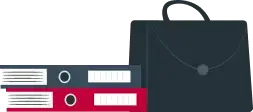
Uploaded Samples
1.5M+
Platform Users
5M+
Total Samples
5M+
User satisfied rate
5M+
Get Instant Assignment Help In Three Steps
Choosing the Service
When choosing assignment writing help service, the initial step entails selecting the particular service needed such as essay aid, dissertation support, or any other form of academic help. Select the assignment writing help in Australia that corresponds to your requirements and academic goals.
Purchasing Procedure
Once you have chosen the desired assignment writing help service, proceed to the checkout process. Please provide all the essential information, such as the assignment criteria, due date, and any specific guidelines. At this point, you will be asked to select a payment method from the choices that are currently available.
Safe and protected transaction
The ultimate stage entails the implementation of a secure payment procedure. Academic support websites commonly provide multiple payment options, such as credit/debit cards, online transfers, or secure payment gateways. Verify that the selected payment method is both convenient and secure, and finalise the transaction to officially confirm your order.
A Wide Array of Fascinating Subjects Explored in Depth
Accounting Assignment Help in Australia
Accounting encompasses the methodical documentation, examination, and comprehension of monetary transactions. Students frequently seek assistance with accounting assignments to better understand concepts such as financial statements, auditing, taxation, and managerial accounting.
Order NowEngineering assignment help in Australia
Engineering assignments encompass various disciplines such as mechanical, electrical, civil, and computer engineering. Students may require assistance with tasks pertaining to design, analysis, project management, or programming.
Order NowComputer science assignment help in Australia
Computer science assignments cover topics such as programming languages, algorithms, data structures, and software development. Students frequently request assistance in coding, troubleshooting, and comprehending intricate algorithms.
Order NowFinance assignment help in Australia
Acquire expertise in the complexities of finance by studying our finance assignment samples. The online assignment writing services in Australia provide practical insights to enhance your financial literacy by covering topics such as financial modelling, investment analysis, and risk management.
Order NowNursing Assignment Help in Australia
Our extensive collection of nursing assignment samples provides nursing students with a valuable resource to enhance their understanding of patient care, medical procedures, and healthcare management. Dive into practical examples to enhance your clinical knowledge.
Order NowLaw assignment help in Australia
Effortlessly navigate the intricacies of legal studies using our law assignment samples. Our help assignment writing services in Australia encompass a wide range of legal documents including case briefs and legal analysis which serve as a robust basis for students aspiring to enter the field of law.
Order NowProgramming assignment help in Australia
Get hands-on experience with our programming assignment samples. Whether you're a novice or an experienced coder, our online assignment help cover a range of programming languages and algorithms to help you tackle coding challenges.
Order NowManagement assignment help in Australia
Improve your proficiency in management by utilising our collection of management assignment samples. Covering topics like organizational behaviour, leadership, and strategic management, these samples offer practical insights into effective management practices.
Order NowMarketing assignment help in Australia
Our marketing assignment help offer a thorough comprehension of marketing strategies, consumer behaviour, and market analysis. Enhance your marketing skills by examining practical instances from the real world.
Order NowEconomics assignment help in Australia
Economics assignments encompass topics such as microeconomics, macroeconomics, econometrics, and diverse economic theories. Assistance may be needed by students in comprehending economic models, evaluating data, or composing research papers.
Order NowExplore Our Diverse Range of Services
Informational assignment samples offer a wide array of examples spanning various fields of study. These samples cover a wide range of subjects including literature, science, business, and others. Through the exploration of assignments across diverse disciplines, students can expand their comprehension of how information is conveyed and examined within distinct academic frameworks.
Exemplary samples of informational assignments frequently demonstrate various research methodologies. These samples provide insights into the methodologies employed to collect and present information, whether it be in the form of a literature review, case study, or experimental design. This analysis is valuable for students looking to enhance their research skills.

Why Choose Professional Assignment Writing Service?
By selecting our professional assignment writing service, you can be assured of our unwavering dedication to delivering exceptional quality, dependability, and utmost customer contentment. We are committed to providing exemplary assignment samples that adhere to the most rigorous academic criteria. The motivation behind our professional assignment writing services in Australia team is a strong commitment to academic achievement, and our objective is to offer students valuable tools to enrich their educational journey. We acknowledge the significance of punctual submissions and the consequential influence it can exert on your academic advancement. By selecting our Australian online assignment writing services, you are choosing a reliable and reputable partner that prioritises excellence, honesty, and the achievement of our clients.
Meet Our Experts:
The team of experts is crucial to our success. Consisting of seasoned professionals and experts from diverse fields, they contribute a vast amount of knowledge and experience. Every expert is carefully selected based on their academic credentials, specialised knowledge, and dedication to delivering exceptional results. Our experts possess not only exceptional proficiency in their specific domains but also demonstrate unwavering commitment to remaining abreast of the most recent trends and advancements. If you require aid with essays, research papers, or any other academic assignment, our specialists are available to assist you in navigating the process and offer valuable perspectives that will enhance the calibre of your work.


Assignment Samples Help
We are dedicated to maintaining high standards of academic excellence, which is reflected in our comprehensive assignment samples help service. We comprehend the difficulties that students encounter in comprehending intricate concepts and attaining proficiency in diverse writing styles. Our samples function as a valuable reservoir, offering explicit illustrations and perspectives on organising assignments, formatting, and presenting ideas with efficiency. Students enhance their comprehension of the expectations and standards established by educational institutions by utilising our assignment samples. This service aims to enhance students' academic performance by equipping them with the necessary resources and expertise to create exceptional assignments.
Additional Services To Improve Your Learning Experience
Personalised Assignment Writing
Customised solutions designed to fulfil your specific needs. Our best assignment writing services in Australia are tailored to meet the distinct requirements of individual students. We comprehend that each assignment is accompanied by its own distinct set of instructions and prerequisites. Our team of skilled writers ensures that your assignment is crafted from scratch, adhering to your specific guidelines.
Editing and proofreading
At Assignment Samples, we understand the significance of delivering impeccable assignments. Our editing and proofreading service extends beyond mere scrutiny of grammar and spelling errors. Our fastidious editors meticulously evaluate your work to ensure clarity, coherence, and overall efficacy. We enhance the quality of your assignments by refining them to perfection, guaranteeing the clear communication of your ideas.
24/7 Customer Support
We demonstrate our dedication to offering uninterrupted assistance through our best assignment help in Australia. Our committed customer support team is available 24/7, regardless of your time zone or the urgency of your inquiry. If you require help with using our website, have inquiries about our best assignment writing services in Australia, or need updates on your order, we are available to offer prompt and useful responses, ensuring a smooth user experience.
Punctual Delivery
We acknowledge the importance of adhering to deadlines in academic environments. Our cheap assignment help Australia team is dedicated to promptly delivering your assignments, allowing you sufficient time for review and submission. Our streamlined processes and efficient workflows enable us to meet even the tightest deadlines without compromising the quality of our work.
Free from plagiarism
Our cheap assignment help Australia writers meticulously ensure that the content they produce is completely devoid of any form of plagiarism. We employ sophisticated plagiarism detection software to guarantee the originality of each assignment and adhere to the utmost standards of academic honesty. Rest assured that we will provide you with genuine and unique work.
Quality Assurance
We maintain our dedication to excellence by implementing a thorough quality assurance process. Prior to delivery, each assignment is subjected to comprehensive evaluations to ensure accuracy, relevance, coherence, and adherence to academic standards. The quality assurance team guarantees that every assignment adheres to our rigorous standards and serves as evidence of the exceptional education we aim to deliver.
Affordable Pricing
We comprehend the fiscal limitations that students frequently encounter. The pricing model we have developed is specifically tailored to cater to the needs of students, ensuring that our cheap assignment writing help in Australia is affordable while maintaining the high quality of our services. We are committed to making high-quality assignment assistance accessible to all students, and our pricing reflects this commitment.
Data Privacy
We highly prioritise your privacy. When you utilise our services, be assured that your personal information is handled with the highest level of confidentiality. We have implemented stringent security protocols to safeguard your data from unauthorised intrusion. Rest assured that we possess the utmost reliability in safeguarding your information, enabling you to concentrate on achieving academic excellence without any apprehensions regarding privacy.
Revision Policy
The commitment we have towards ensuring your satisfaction is demonstrated through our revision policy. If you believe that modifications are necessary for your instant assignment help, we provide a direct revision procedure. We aim to guarantee that the instant cheap assignment writing services is in complete accordance with your expectations, furnishing you with a product that satisfies your academic criteria and specifications.
Expert Consultation
In addition to offering instant assignment help, we provide direct access to our team of experts for tailored guidance. If you require elucidation on an intricate concept, require guidance on organising your assignment, or desire insights into efficient study techniques, our specialists are available to aid you. Utilise their expertise and experience to enrich your educational path.
Assignment Progress Monitoring
We recognise the significance of keeping you informed and involved. Our progress tracking feature enables you to stay updated on the status of your assignment. Stay informed about significant achievements, preliminary versions, and estimated completion dates, guaranteeing openness and enabling you to organise your timetable accordingly.
Wide-ranging Subject Coverage
We offer a comprehensive range of services that encompass a diverse array of subjects and disciplines. Our team of writers is highly knowledgeable in a wide range of fields, including business, engineering, and medicine, making them suitable for students and professionals in these areas. Irrespective of your academic background, our platform guarantees that you will receive the necessary assistance.
Explore Our Diverse Range of Services
Assistance with Assignments
Assignment Help services provided by academic support websites offer invaluable assistance to students who are confronted with a variety of tasks. Seasoned experts offer assistance in comprehending assignment criteria, conducting comprehensive research, and guaranteeing the submission of top-notch deliverables. Assignment Help aims to empower students to excel in their academic pursuits by providing assistance in clarifying concepts, refining writing skills, and ensuring proper formatting.
Order NowAssistance with Writing an Essay
Essay Help services are specifically designed to assist students in the skillful creation of persuasive and well-organized essays. We offer expert guidance in crafting robust thesis statements, efficiently structuring content, and refining language to adhere to academic norms. The objective, regardless of whether the essay is argumentative, persuasive, or descriptive, is to improve the student's proficiency in articulating ideas in a logical and compelling manner.
Order NowAssistance with Statement of Purpose (SOP)
SOP Help services provide assistance to students as they navigate the highly competitive realm of academic and professional applications. We provide specialised support in crafting compelling and customised Statements of Purpose. These documents emphasise individual accomplishments, educational goals, and motivations for pursuing particular programmes, with the intention of leaving a strong impression on admissions committees.
Order NowAssistance with a Dissertation
Dissertation Help is a comprehensive service that provides guidance to students in the complex process of writing a dissertation. This service offers crucial assistance to students engaged in extensive research projects, encompassing tasks such as formulating research questions, conducting literature reviews, presenting findings, and adhering to rigorous formatting standards.
Order NowAssistance with Homework
Homework Help services offer prompt aid with daily assignments, guaranteeing that students comprehend basic principles and providing solutions in a systematic manner. The objective is to enhance comprehension of subjects and topics addressed in standard academic curriculum.
Order NowAssistance with Thesis
Thesis Help services assist students involved in advanced academic research by providing guidance in crafting a robust and targeted thesis statement. Experts aid in organising the thesis, performing comprehensive research, and articulating the findings in a logical manner.
Order NowAssistance with Academic assignments
Coursework Help services are specifically designed to assist students in completing their routine coursework assignments, projects, and assessments. This entails providing assistance in comprehending course materials, accomplishing assignments, and getting ready for exams to guarantee comprehensive academic support.
Order NowAssistance with Writing a Resume
Resume Writing Help services primarily aim to support individuals who are entering the job market. Expert assistance is offered to create resumes that skillfully highlight abilities, past experiences, and accomplishments, thereby enhancing the likelihood of leaving a powerful impact on prospective employers.
Order NowAssistance with Research Proposal
Research Proposal Help services provide assistance in formulating research inquiries, establishing objectives, and crafting compelling proposals. This service is essential for students who are conducting research projects and seeking approval for their proposed methodologies.
Order NowAssistance with Case Studies
Case Study Help services aid students in proficiently analysing and presenting case studies. Experts assist students in comprehending the demands of a case study, conducting thorough research, and organising the analysis in accordance with academic criteria.
Order NowAssistance with Quizzes and Exams
The Quiz and Exam Help services primarily concentrate on facilitating exam readiness by offering study resources, practice inquiries, and elucidation of fundamental principles. The primary objective of this service is to augment students' comprehensive comprehension of subjects and bolster their self-assurance for forthcoming evaluations.
Order NowSix Benefits of Getting Help from Assignment Samples
Clarity of Expectations
Assignment samples enhance the clarity of expectations regarding different academic tasks. Students can acquire comprehension of the structure, formatting, and content prerequisites by consulting meticulously crafted examples.
Learning by Example
Samples function as pedagogical instruments, enabling students to acquire knowledge from tangible instances. Examining proficiently completed assignments facilitates comprehension of proficient writing strategies, research methodologies, and citation formats.
Enhanced Understanding of Topics
Assignment samples provide a more profound understanding of particular topics or subjects. Through the examination of extensive and meticulously researched examples, students can acquire valuable insights into the topic and enhance their reservoir of knowledge.
Time Management
Efficient time management can be facilitated by having access to assignment samples. By utilising samples as templates, students can streamline the writing process, avoiding the need to spend excessive time deciphering assignment requirements.
Improved Writing Skills
Access to exemplary assignment samples fosters the cultivation of proficient writing abilities. By observing the organisation of ideas, presentation of arguments, and drawing of conclusions, students can enhance their writing proficiency.
Boosted Confidence
The utilisation of assignment samples offers a significant increase in confidence for students. Accessing well-organized examples can alleviate anxiety related to approaching assignments and empower students to confidently tackle their tasks.
Looking For An Expert To Write My Assignment!
Seeking assignment expertise? Look no further! Trust our experts to write your assignments with precision and excellence. Elevate your academic journey today!
Client Testimonials
What Our Students Say About Us ?
Assignment Writing Services has significantly transformed my experience! The business assignment samples were extremely beneficial and invaluable throughout my MBA programme. The high calibre of the content and comprehensive explanations facilitated my comprehension of intricate concepts effortlessly. I strongly endorse this website to my fellow students.
The assignment writing services in Australia provided here is of exceptional quality. Access to real-world coding examples has greatly enhanced my coding skills as a computer science student. The extensive range of languages covered is remarkable positioning it as a preferred resource for programming enthusiasts.
The nursing Assignment Writing Services in Australia proved to be precisely suitable for my coursework. The practical scenarios and medical procedures elucidated in the samples significantly enhanced my theoretical understanding. An essential destination for nursing students in search of extensive resources.
I have utilised Assignment Samples for my law assignments, and the legal analysis presented in the samples is exceptional. It facilitated my comprehension of case law and enabled me to apply it to my own assignments. This assignment writing help in Australia distinguishes itself through its profound research and meticulous attention to detail.
I value the round-the-clock customer support. When I had doubts about the statistics assignment samples, the support assignment writing help in Australia team was quick to respond and clarify my queries. The prompt and efficient assistance greatly facilitated my learning experience ensuring a smoother progression.
The engineering assignment writing services available on this platform are a valuable resource for engineering students. The comprehensive explanations and systematic solutions provided for topics ranging from structural analysis to electrical circuits greatly aided me in my exam preparations.
The marketing assignment writing services in Australia available here encompass a diverse array of subjects, offering a comprehensive comprehension of marketing strategies. The inclusion of practical examples and real-world scenarios facilitated the application of marketing concepts in my coursework and projects.
Assignment Samples not only offers exemplary samples but also provides cost-effective bespoke assignment writing services in Australia. I availed myself of their bespoke writing service to meet a pressing deadline, and the calibre of the delivered work surpassed my expectations. Excellent Assignment Writing Services!
The notable aspect of this service is the wide range of supplementary offerings, particularly in the areas of editing and proofreading. I submitted my finance assignment for proofreading, and the suggested revisions were perceptive. It improved the overall quality of my assignment.
The management assignment samples available on this website facilitated my acquisition of a more profound comprehension of organisational behaviour. The extensive scope and pragmatic illustrations enhanced the appeal and applicability of my management studies.









